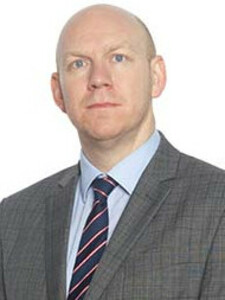The IAF, designed to introduce greater governance within the financial services sector, has been on the horizon for some time. It is only now following the lengthy engagement and consultation with the CBI that the industry is rallying to better understand exactly when and how the regulation will take effect. As tends to happen, there is a sense of urgency among organisations to have their ducks in a row as we inch closer to 29th December 2023 when key elements of the IAF will begin to apply. But if organisations adequately prepare, the IAF should be a benefit rather than burden.

Kevin Coleman
Strong governance and internal risk management remain the foundations on which successful and well-run firms operate. Most recently, the failings of some regional institutions in the US were fundamentally linked to poor corporate governance, a lack of accountability and poor risk management.
Transparent and robust collective decision-making structures; the production and provision of high quality and timely information management; clarity over individual responsibility; and ensuring effective controls are in place, are all critical tenets of a strong governance culture in any organisation.
These are the building blocks of the Central Bank’s Individual Accountability Framework.
While there are some nuanced differences, the design principles of the framework largely follow those of similar regimes in the UK and Australia where the outcome has been largely positive.
Despite the seemingly obvious accountability expectations, much of which should be in place already, the advent of the IAF has generated a range of discussion and feeling across industry, cautiously welcomed in most cases.
It remains, however, that the successful implementation of the framework will require patience and understanding from the CBI and within the industry itself. Rather than being seen as an additional regulatory expectation, the framework is a real opportunity for organisations to improve how they are run, which in turn will result in better outcomes for the customers, clients, and shareholders they serve.
Proportionality
While the design principles apply to all regulated financial service providers – albeit with the Senior Executive Accountability Regime phased in over time – the nature, scale and complexity are critical characteristics both for firms and the CBI to consider when implementing.
The CBI has been at pains to articulate the importance of proportionality and predictability in how the framework will be implemented. This message has been notably emphasised throughout the published guidance.
One of the key differences between the IAF here and the UK Senior Managers Regime is the additional clarity around compliance provided in the IAF guidance. The IAF is helpfully more descriptive and with respect to duty of responsibility and the conduct standards.
The CBI points to the IAF as aiming to align how firm’s structure themselves and will be applied in a proportionate manner reflecting the scale and resources of many smaller, less complex, and/or less risky firms.
To that end, the CBI has positively listened to industry concerns around fitness and probity due diligence enhancements and timing of certification, SEAR Responsibilities, and limiting the application of SEAR in the main to a smaller number of firms in the first phase. Notably, the application of SEAR to (I)NEDs has also been deferred by at least 12 months, and there will be a materiality threshold introduced to determine which branches are in scope for SEAR.
Another signal of positive engagement from a good faith point of view is demonstrated by the CBI in the reversal of certain aspects of the proposed enhancements to fitness and probity, and the additional clarity on the definition of some of the responsibilities to be allocated to senior individuals under SEAR.
The removal of the additional obligation for a firm to report to the CBI where formal disciplinary action has been concluded against an individual was also welcomed by the sector.
Opportunity
Organisations won’t be expected to overhaul their established governance framework, much of which was developed in line with existing regulation anyway. This was a concern that many held but which has since been pacified for the most part. Instead, they will be asked to demonstrate how they currently operate in practice, who holds responsibility and for what, and how key decisions are made. Where there are shortcomings, they may be asked to review their framework in a reasonable and timely manner.
Organisations won’t be expected to overhaul their established governance framework, much of which was developed in line with existing regulation anyway. This was a concern that many held but which has since been pacified for the most part.
This should empower senior management by establishing absolute clarity on what they are responsible for. One of the key differences between the IAF here and the UK Senior Managers Regime is the additional clarity around compliance provided in the IAF guidance. The IAF is helpfully more descriptive and with respect to duty of responsibility and the conduct standards. This allows firms to crystallise what is expected of them in referencing and evidencing these steps.
Opportunities for firms (through the production of Statements of Responsibility and Management Responsibility Maps) to self-identify areas for improvement in how they are governed, their overall operating model and distribution of resources, will also be a consequence of the framework.
Control
In theory this all points to adaptable and workable solutions to strengthening governance controls but there is no doubt that there is a feeling of nervousness in some areas regarding how IAF will operate in practice.
Rather than investing time surmising, however, firms should instead focus on the things they can control – namely the way they think about the IAF, and how they will respond and implement it.
The overarching aim of the legislation is to strengthen and enhance individual accountability in the financial services industry, and to provide transparency to supervisors and the public. There won’t be a single financial services leader out there who would disagree that this is a positive step for all the stakeholders involved.
